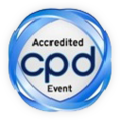
George Trendelenburg
Universitätsmedizin Göttingen, Germany
Title: Initiation of innate immune response in ischemic brain injury and identification of related pathways
Biography
Biography: George Trendelenburg
Abstract
Brain damage, e.g. by ischemic injury not only causes direct tissue injury by the initial stimulus (e.g. insufficient oxygen supply) itself, but also initiates a complex inflammatory response. These inflammatory mechanisms are supposed to contribute substantially to an expanding demise of brain tissue in the vicinity of the ‘injury core’. However, the inflammatory response is also important for repair (e.g. scar formation), neuronal plasticity, and reconstitution of tissue homeostasis. Thus, a profound knowledge is required when intervening strategies were planned, which target on a reduction of inflammation-related tissue injury, without interfering with beneficial repair pathways. Initiation of the inflammatory cascade is an important step for further brain damage. Data show that different sensors in different models of brain damage may exist, but initiation of inflammation in various injury paradigms obviously involve astonishing similar pathways (e.g. components of the innate immune system, such as ‘danger signals’ and their receptors, the complement system, etc.). In the following talk potential initial events will be discussed in more detail, including ligands which mediate initiation (e.g. ‘danger signals’, of the inflammatory response, their corresponding receptors (such as Toll-like receptors, NLRPs or NOD-like receptors, the inflammasome, etc.), as well as their connected ‘downstream’ pathways. The current concept of a complex interplay between signaling networks and different cell types in the brain is becoming more complex every year. Nevertheless, the current concept of emerging pathways as well as the central mechanisms which were thought to contribute substantially to inflammatory brain injury will be discussed.

